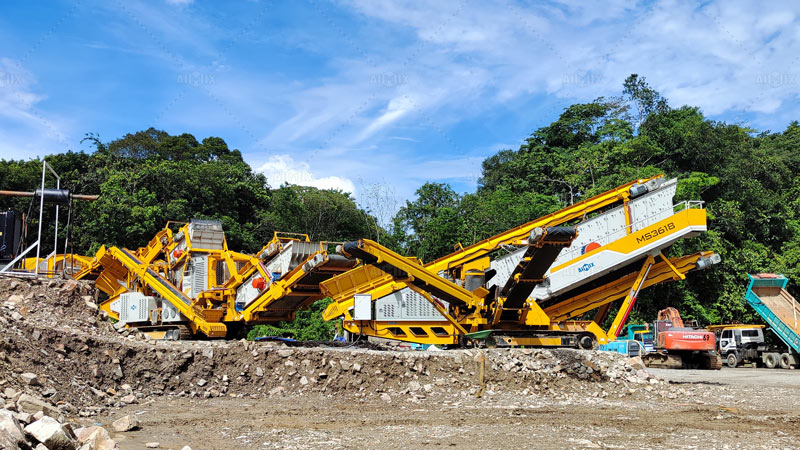Stone crusher plants are a vital part of the construction and mining industries, enabling the efficient processing of raw materials into usable aggregates. Whether you're planning to set up a plant or just want to understand the basics, this guide covers everything you need to know about stone crusher plant operations, from components and processes to tips for maintenance and efficiency.
Understanding the Basics of a Stone Crusher Plant
A stone crusher plant is a facility designed to crush large rocks and stones into smaller sizes for construction purposes. These smaller aggregates are used for making concrete, roadbeds, and other construction materials. The plant(como funciona una planta trituradora de piedra) typically comprises several interconnected machines, each serving a specific purpose in the production process.
Key Components of a Stone Crusher Plant
The primary components of a stone crusher plant include:
- Feeder: Regulates the flow of raw materials into the crushers.
- Primary Crusher: Reduces large rocks into smaller, more manageable pieces. Common types include jaw crushers and gyratory crushers.
- Secondary Crusher: Further processes the material into finer sizes, often using cone crushers or impact crushers.
- Screening Unit: Separates crushed materials based on size to ensure uniformity.
- Conveyors: Transport materials between machines and to storage or loading areas.
How a Stone Crusher Plant Operates
The operation of a stone crusher plant involves multiple stages. Each stage is critical for achieving efficiency and ensuring the production of high-quality aggregates.
Stage 1: Feeding Raw Materials
The process begins with raw materials being loaded into the feeder. The feeder ensures a consistent flow of materials into the primary crusher, avoiding overloading or interruptions.
Stage 2: Primary Crushing
In this stage, the primary crusher reduces large rocks into smaller chunks. This step is crucial as it prepares the material for further processing.
Stage 3: Secondary Crushing
The partially crushed material is transferred to the secondary crusher for further size reduction. This stage helps achieve the desired granularity, ensuring the material meets project requirements.
Stage 4: Screening
The crushed material passes through screens that separate it into different sizes. Oversized material may be returned to the crusher(trituradora de impacto de eje vertical) for additional processing, while the finished product is transported to storage or directly to the construction site.
Stage 5: Material Handling
Conveyors and storage systems play a crucial role in transporting and managing the processed material. Efficient material handling ensures smooth plant operations and minimizes downtime.
Advantages of Stone Crusher Plants
Stone crusher plants offer numerous benefits for construction and mining projects, including:
- High Efficiency: Automated systems ensure quick and efficient material processing.
- Cost Savings: Producing aggregates on-site reduces transportation costs.
- Versatility: Can handle various materials, including granite, limestone, and basalt.
- Scalability: Plants can be tailored to meet small-scale or large-scale project requirements.
Tips for Maintaining a Stone Crusher Plant
Proper maintenance is essential for ensuring the long-term performance of a stone crusher plant. Here are some tips:
1. Regular Inspections
Conduct routine checks on all components, including feeders, crushers, and conveyors. Look for wear and tear or potential issues that could affect performance.
2. Lubrication
Ensure that all moving parts are adequately lubricated to reduce friction and prevent overheating. Follow the manufacturer’s recommendations for lubrication schedules and products.
3. Replace Worn Parts
Replace worn or damaged parts promptly to prevent further damage and avoid unexpected downtime. Keeping spare parts on hand can save time during repairs.
4. Train Your Operators
Ensure that all operators are well-trained in the proper use and maintenance of the plant. Knowledgeable staff can identify potential problems early and address them effectively.
Applications of Stone Crusher Plants
Stone crusher plants are versatile and used in various industries, including:
- Construction: Producing aggregates for concrete, road construction, and building foundations.
- Mining: Crushing ores and rocks for mineral extraction.
- Infrastructure Projects: Supporting large-scale developments like bridges and tunnels.
Conclusion
Stone crusher plants are essential for the efficient production of construction materials. By understanding their components, operations, and maintenance needs, you can ensure the smooth functioning of your plant and achieve optimal results. Whether you're new to the industry or looking to improve your operations, following these guidelines will set you on the path to success.


Comments
No comments yet. Be the first to react!